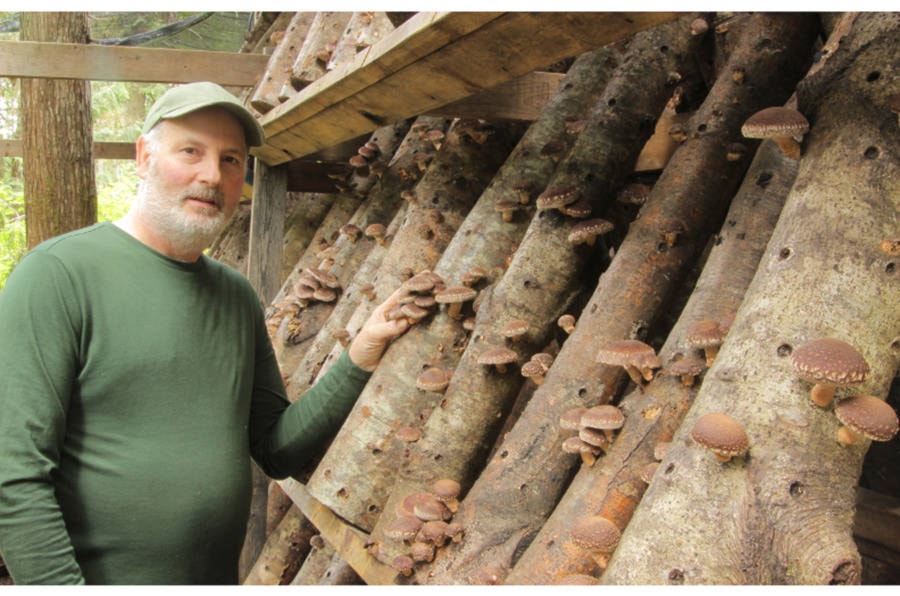In the aftermath of this winter’s destructive windstorms, a Vancouver Island business is encouraging landowners to grow food on fallen trees.
Paul Gurszki, owner of Grow Mushrooms Canada, has done just that – producing hundreds of pounds of shiitake on logs each spring and fall.
“The process is very easy,” said Gurszki. “Simply tap a wooden dowel covered with mushroom culture into holes you have drilled in freshly fallen trees. Seal with wax, then wait for nature to do her thing.”
Waiting for the first mushroom to fruit can take from six months up to two years, depending on which kind of mushroom you are growing and the diameter of the log. Once a log is completely colonized, mushrooms will sprout naturally on their own during spring and fall rains.
If nature doesn’t co-operate with enough rain, you can help the process along by soaking and watering the log. Mushroom logs should be kept in the shade, sheltered from the drying heat of the sun.
Many gourmet mushroom species are well-suited to the hardwood trees of Vancouver Island. Shiitake, oyster, yellow oyster and lion’s mane are some of the delicious edible mushrooms that can be grown on local red alder, big leaf maple, cottonwood and oak. Two of the most renowned medicinal mushrooms - reishi and turkey tail, will also thrive on local hardwoods.
Grow Mushrooms Canada also offers a few strains that are suited to Douglas fir and other coniferous trees – such as the Phoenix oyster and the conifer coral.
Bring your mushroom growing questions to the Courtenay Seedy Saturday event March 2 between 10 a.m.-3 p.m. at the Florence Filberg Centre, or visit the “learn to grow” page at www.growmushroomscanada.ca
